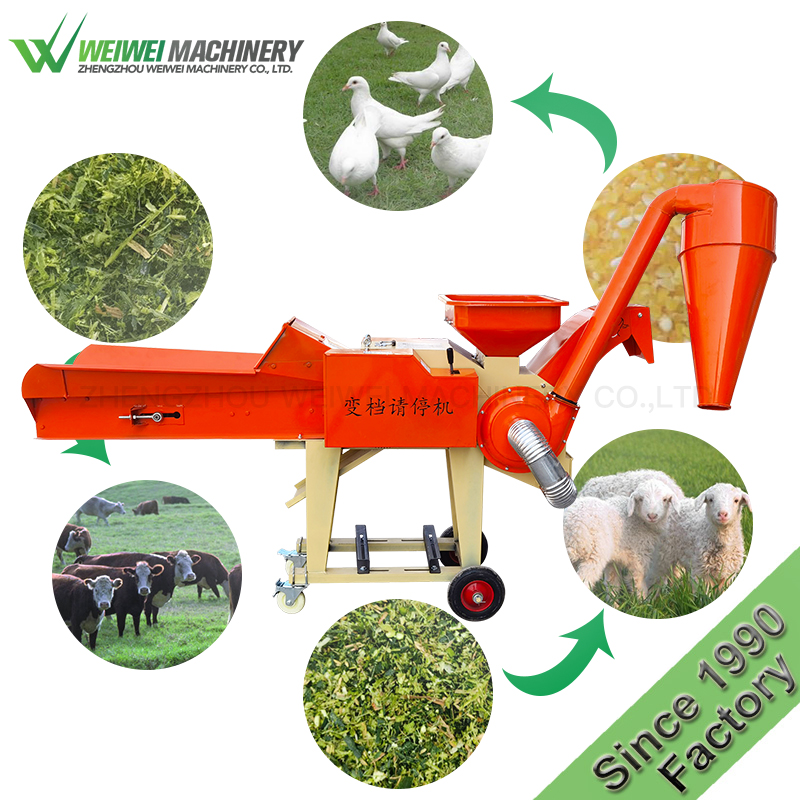Weiwei guillotine and shredder is a more practical type of grass and straw processing equipment. The equipment can turn corn straw, wheat straw, rice straw, peanut straw and other crops and forage into softer shredded feed through the principle of guillotine, powder, kneading and rolling, which improves the utilization rate and palatability of forage. It has the advantages of stable performance, simple operation, sturdiness, high efficiency and flexibility. It is suitable for feed processing plants, livestock breeding plants, paper mills and other fields.
What are the feeds for cattle? How to choose feed for cattle? How can I combine feeds for beef cattle to speed up their growth?
Feed for cattle I: Grass materials
Green grass is characterised by its rich nutrition and high crude protein content, generally up to 12-25%. Green grass is palatable and easy to digest, but is bulky and contains a lot of water.
The quality of leguminous green fodder in green fodder is better than that of hot fodder from grasses and vegetables. Commonly used green forages for cattle are elephant grass, maize leaves, cauliflower, cabbage, sugar beet, peanut vines, weeds, sugar cane tails and carrots. The best cattle feeds
Cattle feed 2: Silage
Silage is fresh green succulent feed such as canned maize, sugar cane tail, squash mushrooms, peanut vines, elephant grass and melons, chopped and stored in sealed silage cellars, fermented from milk.
It maintains the nutritional value of the green fodder, improves the palatability of the raw material and provides a balanced supply of green fodder, making it a good feed for cattle.
Feed for cattle III: concentrated health products
Roughage is far from adequate to meet the nutritional requirements of beef cattle. To ensure the benefits of cattle farming, beef cattle need to grow quickly and need to be supplemented with box feeds
The same feed, whether nutritionally complete or not, has a direct impact on the growth and development of cattle within. The feed includes energy feed (containing corn, sorghum, barley, etc., about 60-70% of the supplementary feed), protein feed (containing soybean cake (grain), cottonseed), pellet raw cake, etc., about 20-25% of the boxed feed), minerals, etc.
Energy and protein feeds can be sourced locally by ordinary feeding enterprises, but as mineral feeds contain a greater variety of vitamins and trace elements (generally up to several dozen) and are evenly mixed, among other requirements, it is generally recommended to use professional feed brands of beef cattle compound premixes
Feed for cattle IV: Feed additives to promote growth
In order to achieve rapid fattening of beef cattle and to speed up their marketability, the use of fattening feed additive products for beef and lamb is recommended. It also includes feed additive products that strengthen the stomach, promote digestion, eliminate food, enhance the function of the cow's stomach and improve absorption and conversion rates.
Farmers can add feed additives to neem supplements on a pro-rata basis. Experimental results have proven that the growth rate of beef cattle fed with growth promoting feed additives can generally be increased by more than 15%.


